Nous faisons confiance à notre usinage CNC, which benefits our clients' perfect control of 0.01mm accuracy and 8 jours ouvrables.
- Maison
- Prestations de service
- les industries
- Automatisation
- Electronique grand public
- Usinage médical CNC
- Broyage de PCB
- Usinage aérospatial
- Usinage CNC automobile
- Pièces de vélo usinées CNC
- Usinage d'ouverture de la bouteille CNC
- Usinage d'arbre à cames CNC
- Usinage à vis CNC
- Pièces de rechange d'usinage CNC
- Usinage de pistons CNC
- Cadeaux usinés CNC
- Volant usiné CNC
- Rasoir de sécurité usiné CNC
- Fidget Spinner usiné CNC
- Dés usinés CNC
- Pièces d'échecs usinées CNC
- Galerie
- Ressources
- À propos de nous
4-Services d'usinage CNC d'axes
TOPS Precision vous propose les derniers services d'usinage CNC 4 axes qui offrent des résultats précis et efficaces pour votre pièce.. Nous avons réuni un groupe d'experts en fabrication dotés de l'équipement approprié pour aider les industries du monde entier..
- Tolérances: ±0,001"
- Soutien: 24/7 Assistance technique
- Certifications: OIN 9001 & OIN 13485
- Options personnalisées: OEM/ODM disponible
N'attendez pas : commandez votre devis personnalisé CNC 4 axes ici aujourd'hui!
Envoyez votre demande aujourd'hui

Qu'est-ce qu'une machine CNC 4 axes?
4-L'usinage CNC sur axe est une commande numérique informatique sophistiquée qui étend le mouvement de rotation de l'axe A dans l'usinage à 3 axes conventionnel à l'origine.. Cette machine peut manipuler une pièce sur quatre axes: X, Oui, Z, et un A (ou B) axe pour offrir une polyvalence accrue pour les applications qui impliquent la découpe de formes et de géométries complexes et difficiles à réaliser dans une pièce.
Principe de fonctionnement d'une machine CNC 4 axes
Ici dans une machine CNC 4 axes, l'axe A est généralement l'axe de rotation qui se trouve dans un plan avec l'axe X. Cela signifie qu'avec cette rotation supplémentaire, la pièce peut être usinée sur toutes ses surfaces sans nécessiter l'intervention de l'opérateur. Cette configuration apporte de la précision, fait gagner du temps, et offre également la possibilité de gérer des conceptions plus complexes. Voici une description étape par étape du processus de travail:
Envoyez votre demande aujourd'hui
- Conception et programme – La pièce actuelle a été conçue à l'aide d'un système CAD/CAM, avec un programme efficace ou compatible obtenu.
- Configuration de la machine – La pièce à usiner est placée sur la machine et les points de référence de l'outil sont confirmés.
- Usinage – La machine peut se déplacer le long du X, Oui, et axes Z, et le 4 axes pour usiner la pièce sous n'importe quel angle.
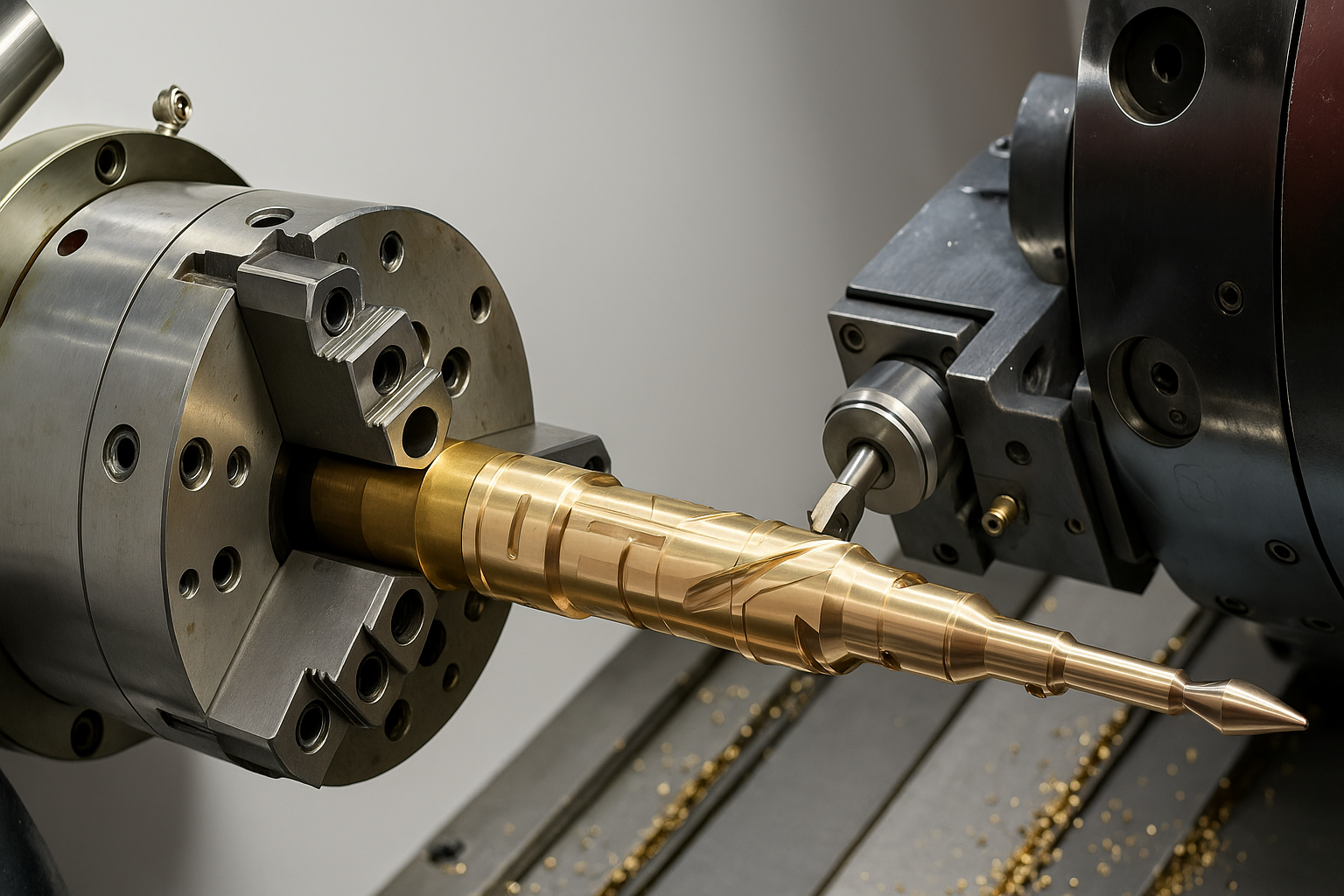
Types d'usinage CNC 4 axes
Voici les différents types de machines CNC 4 axes que nous utilisons:

Usinage continu 4 axes
Avec ça, l'outil fonctionne sur les quatre axes pendant le processus d'usinage, en particulier lorsque vous travaillez sur des conceptions 3D difficiles qui nécessitent un contour cohérent. Cette méthode est fréquemment appliquée dans les industries aérospatiale et énergétique, en particulier lorsqu'on travaille avec des matériaux difficiles à usiner tels que les aubes et les roues de turbine qui nécessitent plusieurs arêtes de coupe inclinées.. L'usinage continu intégré améliore encore la finition de surface et réduit le temps d'usinage car tous les axes peuvent se déplacer de concert sans interruption pour effectuer un seul mouvement transversal sur la surface souhaitée..
Usinage 4 axes à indexation
Ici, la pièce tourne par petits pas sur l'axe A et reste ensuite alignée uniquement selon certains angles pour l'usinage. Cette approche est souvent adoptée car la fraise n'est pas obligée de tourner souvent pour les pièces à plusieurs faces qui ne tournent pas, telles que les pièces de forme rectangulaire ou prismatique.. C'est une solution plus efficace avec une grande précision pour les géométries de base, ce qui permet de l'appliquer sur des moules, logements, et autres pièces mécaniques simples. Certains modèles sont usinés d'un côté de la pièce comme de l'autre, avoir une standardisation des différentes pièces.
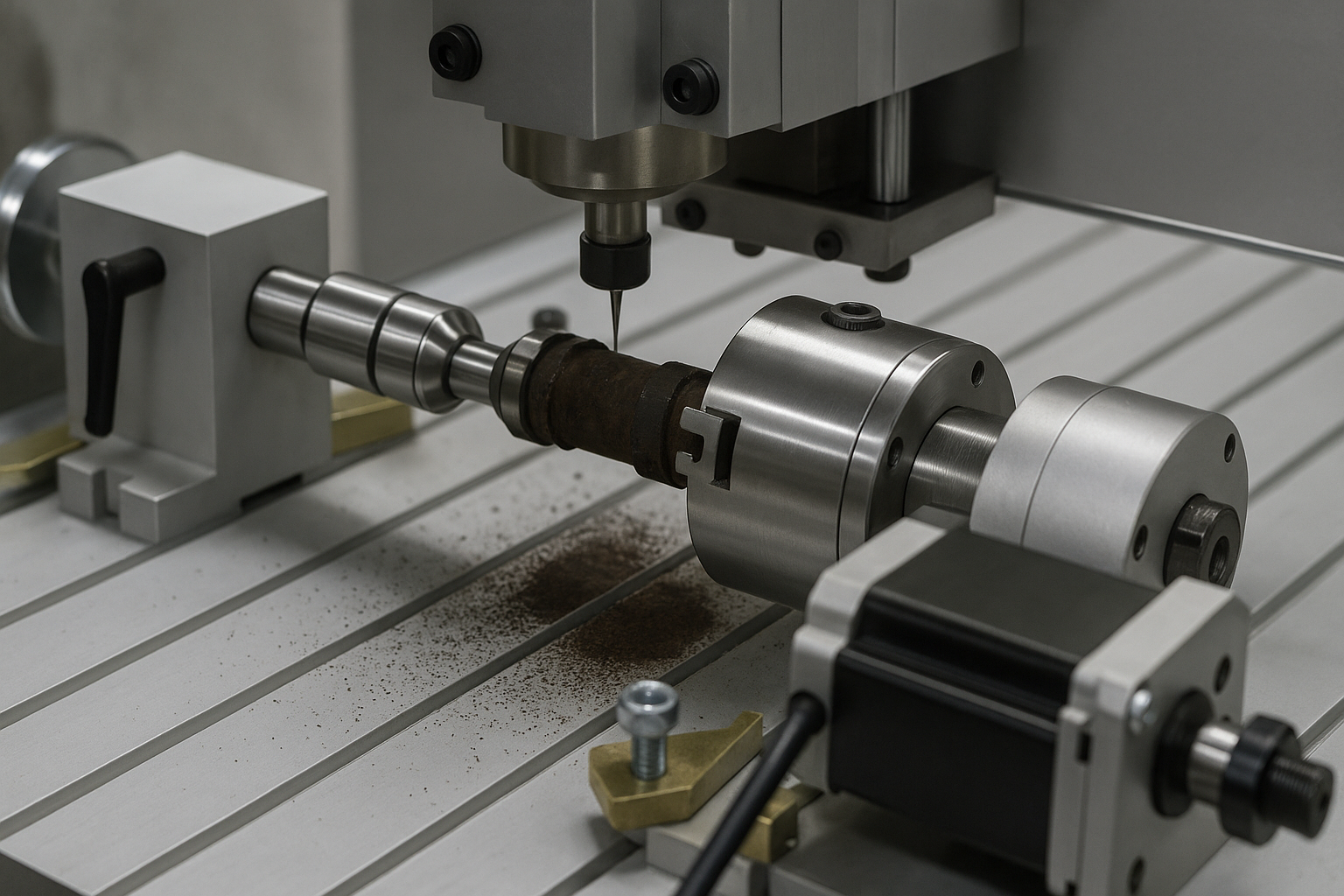
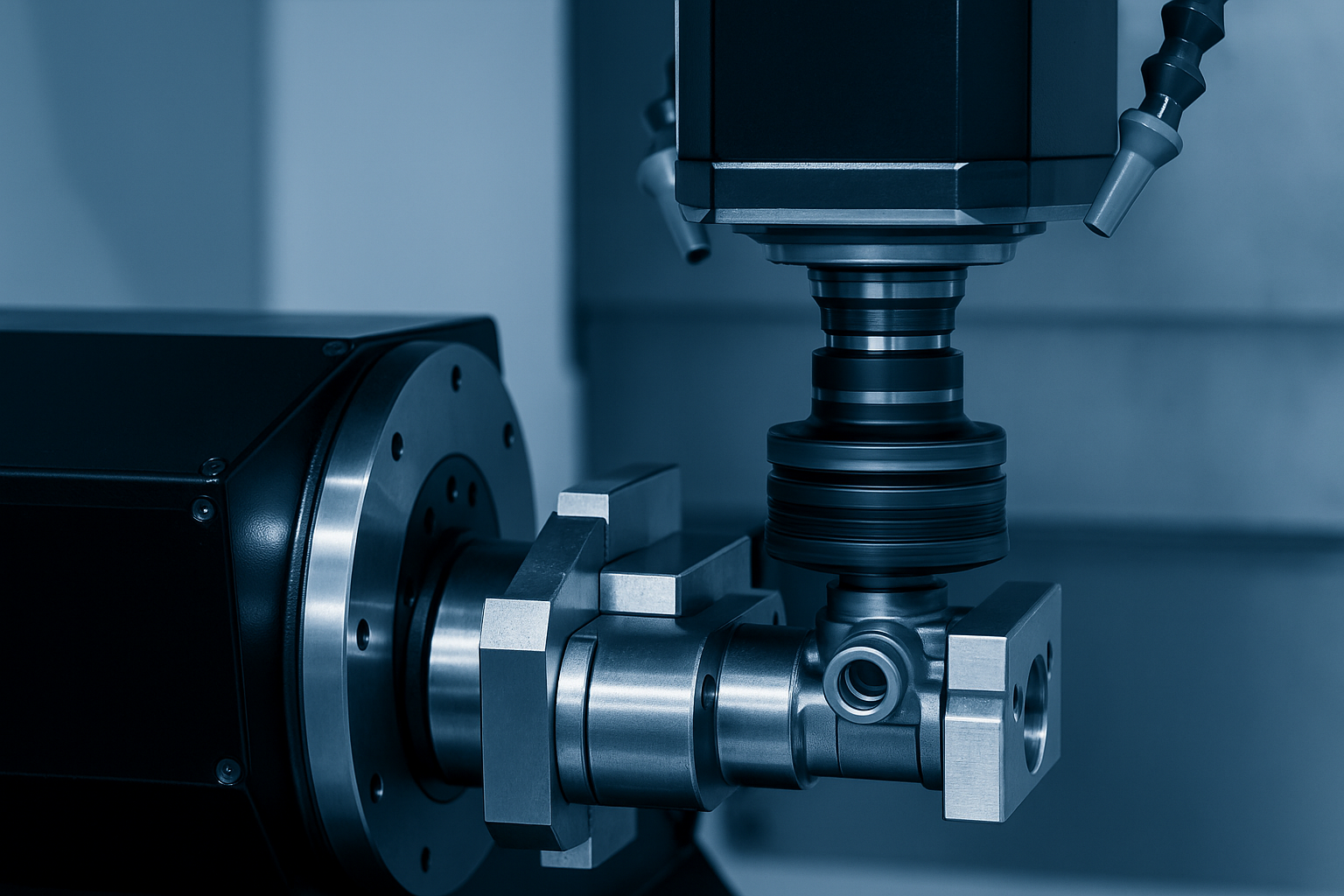
Usinage rotatif 4 axes
Il peut faire tourner la pièce sur l'axe A tandis que l'outil de coupe n'est pas affecté sur les autres axes.. Cette technique est particulièrement idéale lorsque les pièces de forme sont rondes ou cylindriques comme les arbres., rouleaux, ou engrenages qui nécessitent une surface hautement finie. L'usinage rotatif réduit le temps nécessaire au repositionnement de la pièce et permet une coupe uniformément répartie sur la circonférence des pièces cylindriques, ce qui rend le processus efficace pour la découpe d'éléments symétriques sur des pièces cylindriques..
Usinage d'emballage (Enveloppe de cylindre)
Ici, l'outil de coupe entoure le contour cylindrique de la pièce à travers la rotation de l'axe A et peut effectuer une gravure séquentielle ou développer toute figure inégale sur les cylindres. Il est principalement utilisé pour graver du texte ou d'autres motifs sur des objets circulaires, notamment des pipes à cigarettes ou des bijoux artistiques..
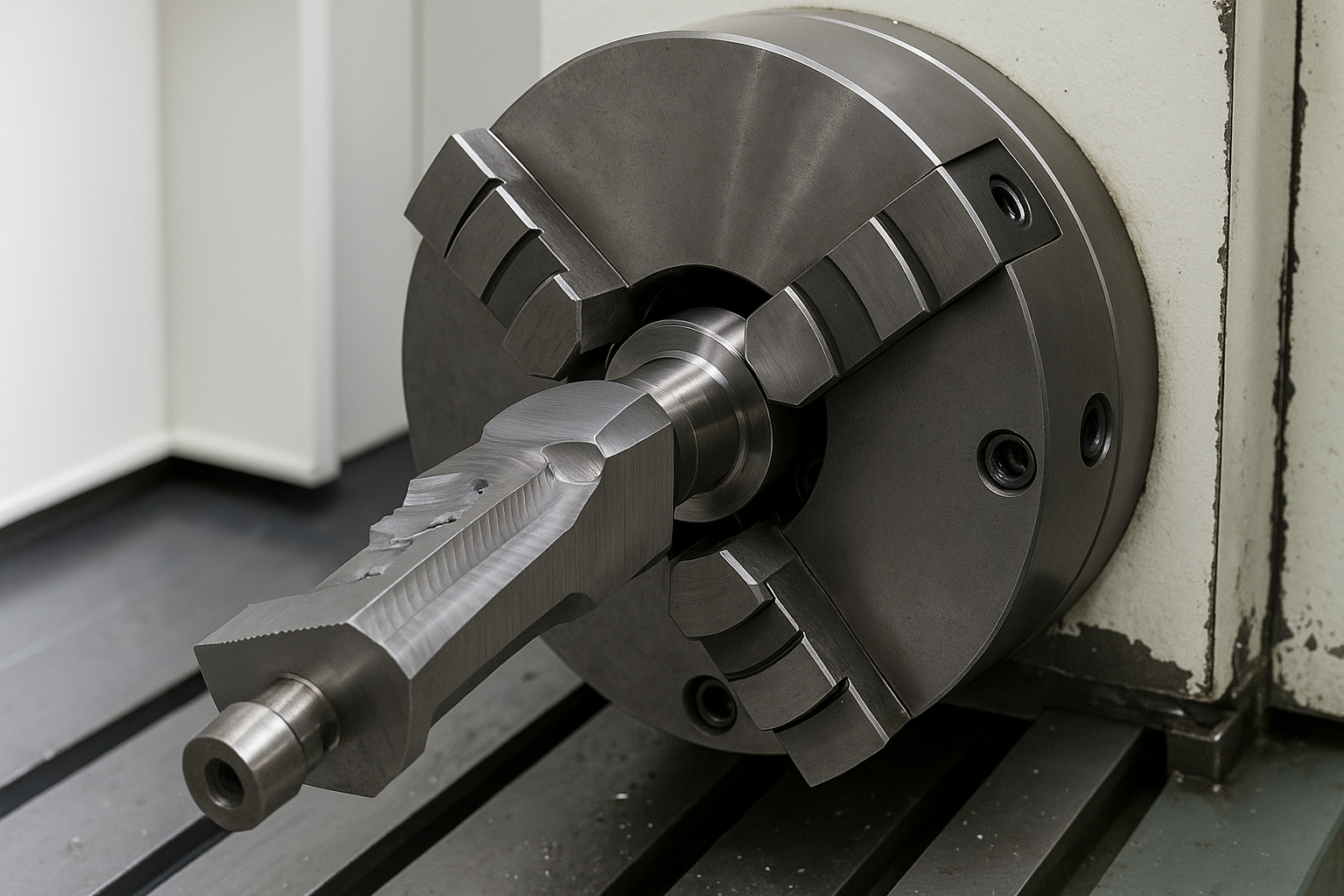

Usinage simultané sur 4 axes
Comme l'usinage continu, mais encore une fois plus axé sur la production de types de moules pour les formes complexes où le contrôle de chaque outil au-delà du réglage sur quatre axes est nécessaire.. Il est utilisé dans l'usinage de pièces à franges composées qui ont des apparences très aléatoires et nécessitent un ajustement doux et cohérent de tous les axes pour acquérir une certaine géométrie..
4-Usinage à grande vitesse sur les axes
Cette technique se caractérise par un mouvement rapide et continu de l'outil et une vitesse de coupe élevée sur les quatre axes., tandis que le temps de fonctionnement est maximisé et la précision géométrique est minimisée. Son utilisation est la mieux adaptée à la production de masse où la plus haute précision est nécessaire pour une fabrication réussie des produits., c'est à dire. moteurs automobiles, boîtier électronique, et bien d'autres.
Usinage de contours sur 4 axes
Son application prévue est de générer des formes complexes de contournage sur les pièces.. Il peut s'agir d'une combinaison de surfaces plates et cylindriques et utilisé lorsqu'une pièce présente des bords ou des caractéristiques courbes et droits, de sorte que l'outil de coupe peut s'adapter au changement de contour le long de l'axe A..
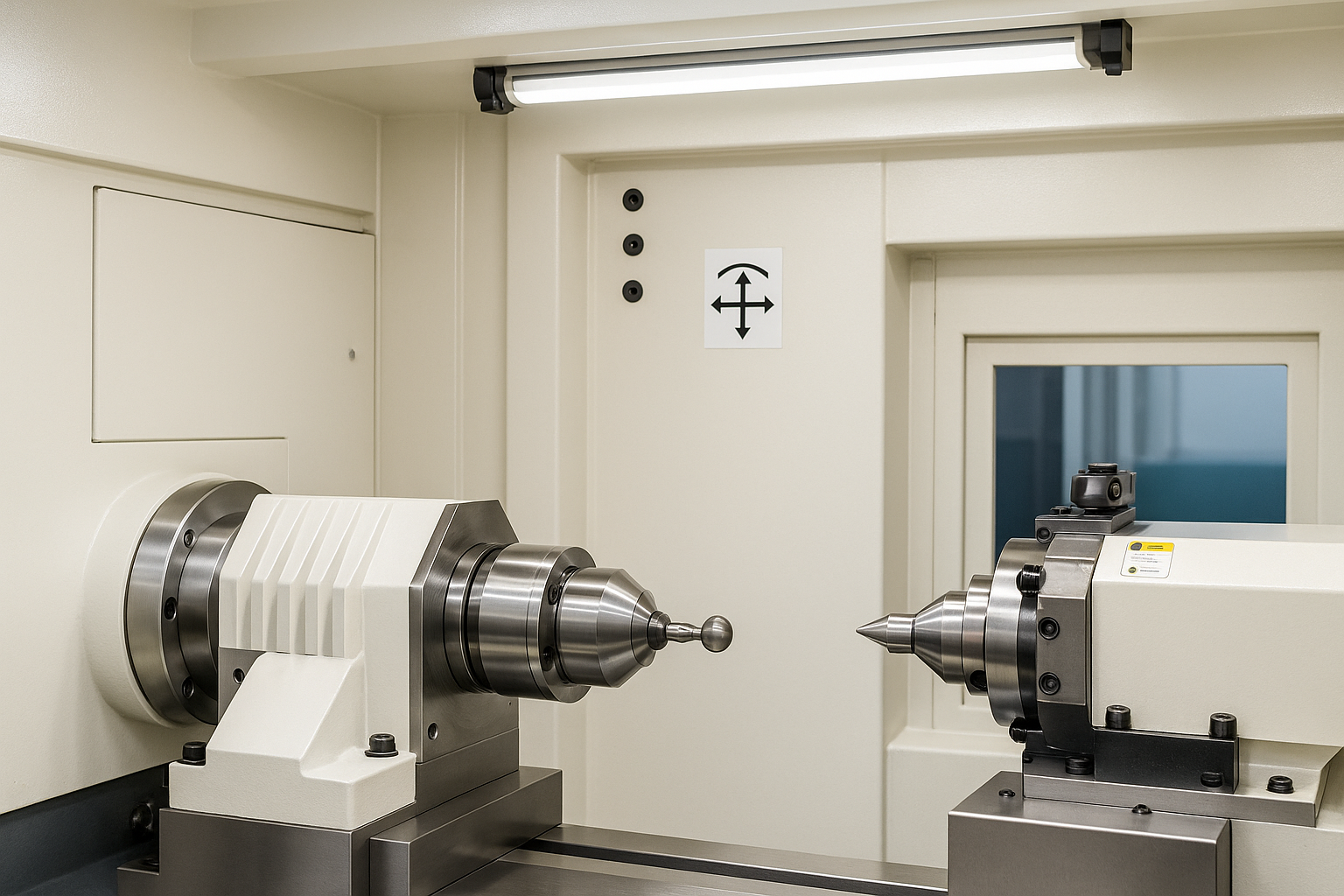

4-Usinage bi-broches Axis
Certaines des dernières machines CNC à 4 axes sont développées avec des systèmes à double broche dans lesquels deux broches travaillent simultanément sur différentes parties de la pièce.. Cette configuration améliore l'efficacité et est préférée dans les processus de production élevée car il est possible de travailler sur les différents côtés ou sections à la fois..
Matériaux et applications optimaux dans l'usinage CNC 4 axes
| Matériel | Propriétés | Applications | Avantages |
| Aluminium | Poids léger, rapport résistance/poids élevé | Aérospatial, automobile, électronique | Abordable, usinable |
| Acier | Haute résistance, durable | Pièces structurelles, machinerie, moules | Polyvalent, disponible en qualités |
| Acier inoxydable | Résistant à la corrosion, haute durabilité | Médical, transformation des aliments, pièces marines | Résiste aux environnements difficiles |
| Laiton | Faible frottement, conducteur | Plomberie, connecteurs électriques | Recyclable, esthétique |
| Titane | Haute résistance/poids, biocompatible | Implants médicaux, aérospatial | Poids léger, durable |
| Cuivre | Conductivité thermique/électrique élevée | Pièces électriques, dissipateurs de chaleur | Excellent pour les utilisations thermiques |
| Plastiques (abdos, POM) | Poids léger, résistant aux produits chimiques | Prototypage, biens de consommation | Facile à usiner, rentable |
| Fibre de carbone | Haute résistance, rigide | Aérospatial, automobile, équipement de sport | Poids léger, force avancée |
| Magnésium | Très léger, force modérée | Aérospatial, électronique | Idéal pour les personnes sensibles au poids |
| Acier à outils | Haute dureté, résistant à l'usure | Outils de coupe, moules | Précision, haute durabilité |
| Inconel | Résistant à la chaleur, résistance à la traction | Turbines, pièces à haute température | Durabilité extrême à la chaleur |
Avantages de 4 Machines de découpe CNC à axe
- Précision améliorée: Il a une plus grande précision dans les structures complexes qu'une machine-outil de tournage-fraisage à un axe.
- Temps de production réduit: Fabrication de pièces intégrée sans gabarits de carrosserie.
- Rentabilité: Réduire le nombre de modifications de configuration présente un autre avantage, c'est efficace en termes de coût et de temps.
- Détails améliorés: Gérer des conceptions difficiles, formes, et les particularités sont un jeu d'enfant.
- Applications polyvalentes: Convient aux industries qui nécessitent des tolérances strictes telles que l'aérospatiale, automobile, et le secteur de la santé.
TOPS Precision – Pourquoi choisir TOPS Precision pour l’usinage CNC 4 axes?
Chez TOPS Précision, nous proposons des services d'usinage CNC 4 axes de qualité dont les caractéristiques sont variables pour garantir qu'elles répondent aux besoins du projet. Voici pourquoi les clients nous font confiance pour leurs besoins d'usinage:
- Vaste expérience de l'industrie: Plus que 15 années d'expérience dans l'industrie de l'usinage de précision.
- Excellence certifiée: Conditions des deux ISO 9001 et ISO 13485 ont également été remplies.
- Technologie de pointe: Machines modernes à commande numérique par ordinateur à 4 axes pour de meilleurs résultats.
- Processus transparents: Vérification facile des devis et passation des commandes pour vous aider à vous sentir détendu.
3-Axe contre. 4-Machines CNC à axes: Lequel devriez-vous choisir?
Encore, la décision concernant l'utilisation d'une CNC à 3 ou 4 axes dépend de la complexité de la pièce et de l'application. Pour les produits simples et plats, une simple CNC 3 axes peut suffire. Mais pour les formes complexes offrant des géométries à multiples facettes, les machines CNC à 4 axes sont bien plus précises et efficaces que de dépenser du temps et de l'argent..

Appelez-nous dès aujourd'hui pour discuter de la façon dont TOPS Precision peut personnaliser vos besoins en usinage CNC 4 axes., ou pour savoir comment TOPS souhaite devenir votre fournisseur de services d'usinage de précision CNC.
Envoyez votre demande aujourd'hui
Questions fréquemment posées
Nous proposons également un usinage CNC 4 axes, ce qui signifie qu'en plus du 3 axes conventionnel. Il a la capacité de se déplacer en X, Oui, et Z, des mouvements circulaires entiers sont possibles grâce à des axes rotatifs affectant la vitesse de l'ensemble du processus. Donc, il peut créer des pièces compliquées tournées sous différents angles.
Plusieurs industries comme l'aérospatiale, automobile, médecine, et l'électronique bénéficient de nombreux avantages de l'usinage 4 axes en raison de la vitesse et de la grande précision ainsi que de la complexité des géométries grâce aux tables rotatives 4 axes.
Oui, 4-L'usinage CNC à axes est capable de répondre aux exigences de tolérance élevées, généralement à ± 0,005 mm.. Donc, il peut être utilisé lorsque des conceptions de pièces détaillées et compliquées sont utilisées.
4-L'usinage des axes offre une précision et un débit accrus pour les disques avec des bords fortement inclinés., réduit le risque de déplacement des pièces, et permet un fraisage efficace en une seule opération de serrage.
L'usinage continu sur 4 axes permet aux quatre axes de se déplacer librement en même temps pour des structures complexes comme la tête de lame. L'indexation fait tourner la pièce selon les pas souhaités pour effectuer des opérations simples., opérations séquentielles sur le bluff à multiples facettes.
